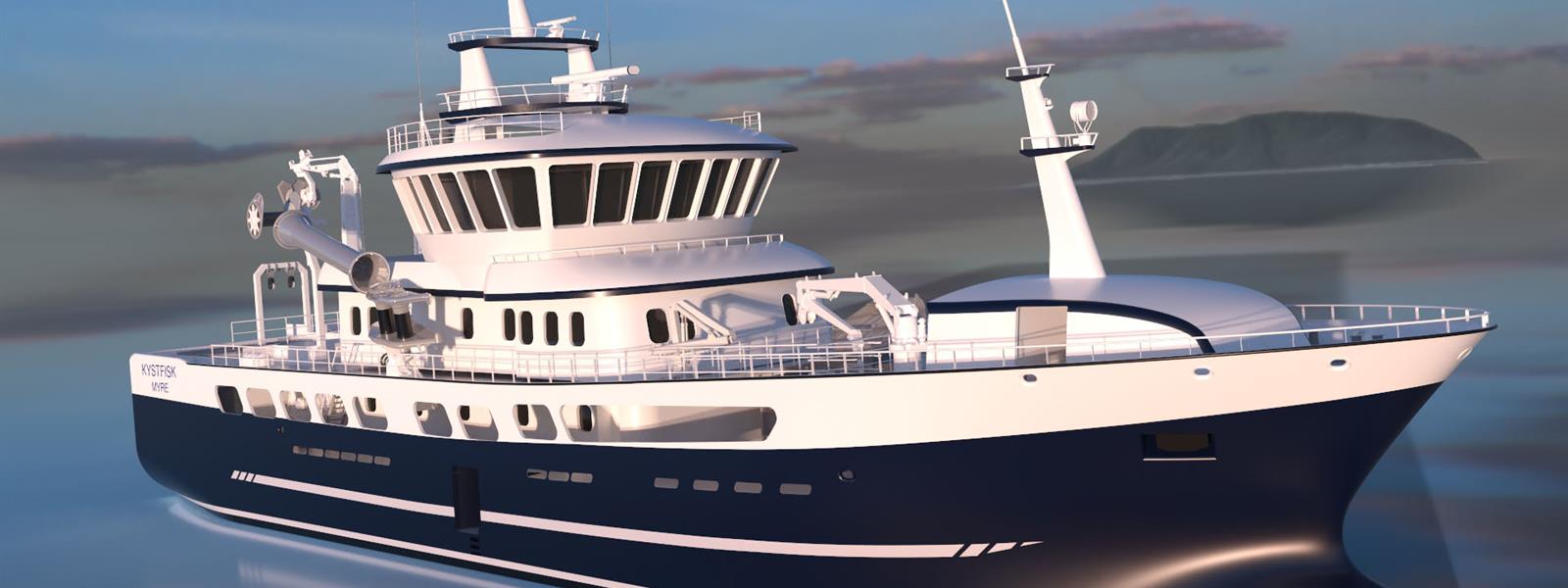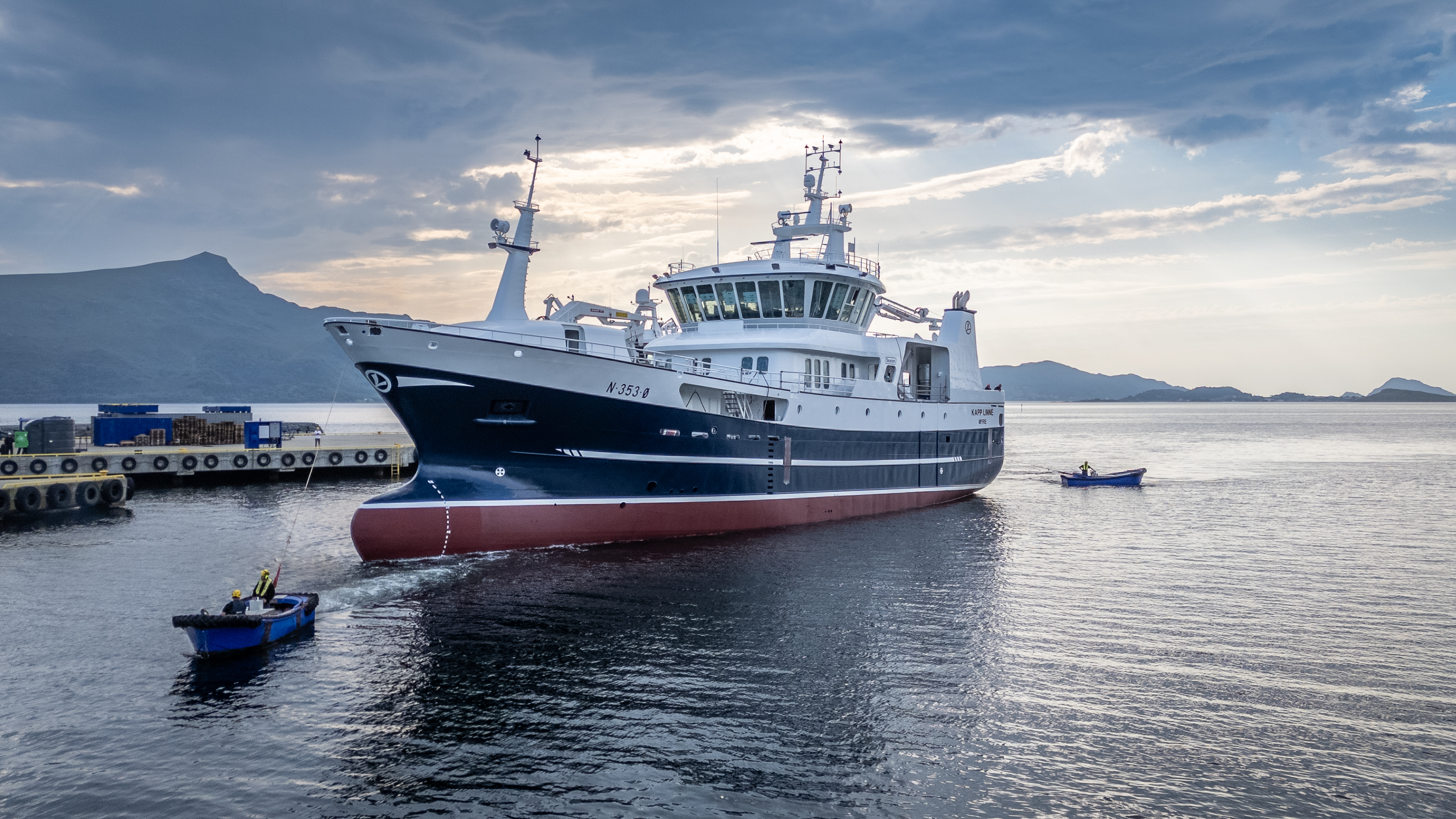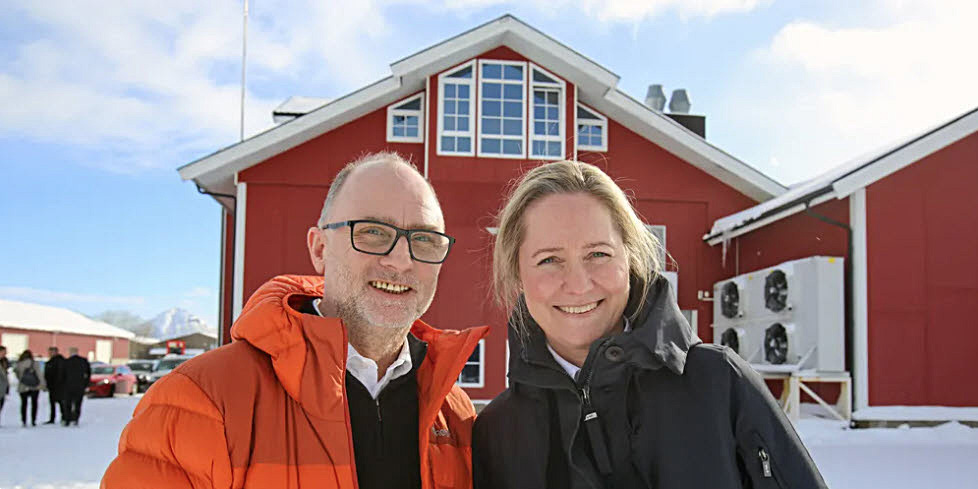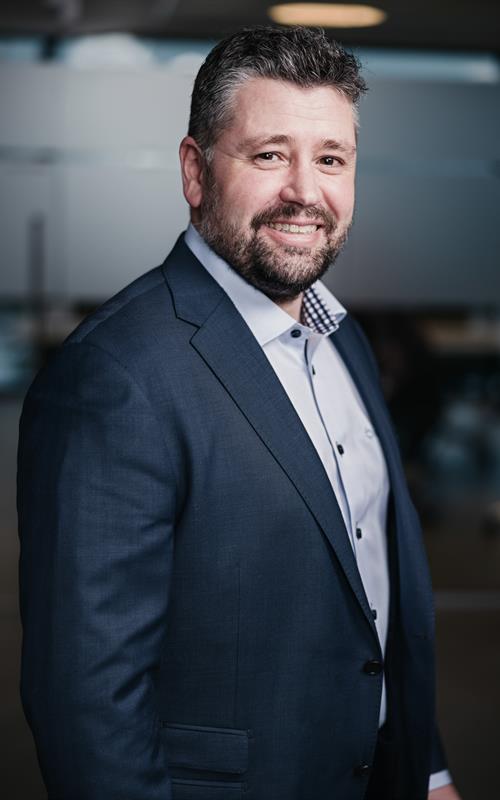
Kapp Linné: A new type of fishing vessel – built for the future
After more than 35 years in the fishing industry, Michael Lockert, owner of Myre Kystdrift, decided to try something completely new. The result is Kapp Linné – the world’s first combination vessel for whitefish and aquaculture. Equipped with technology from Optimar and designed with profitability, sustainability, and future requirements in mind, Kapp Linné will enable year-round operations, increased efficiency, and lower emissions.
From seasonal fishing to year-round operation
Michael Lockert has been a fisherman since 1986, and running his own vessel since 1998. However, with extensive periods of downtime, it became clear that traditional solutions weren’t sustainable. "It doesn’t make sense for a vessel worth millions to lie idle for eight months of the year," he says.
Together with co-owner Olav Lassesen, they began planning a new concept: a vessel that could seamlessly transition from winter cod fishing to stun and bleed operations for the aquaculture industry – without changing crew or vessel.
Kapp Linné, currently being outfitted at Larsnes Mek, is 51 meters long and 12 meters wide. The vessel features two separate processing lines: a manual line for whitefish and a fully automatic stun and bleed line for salmon – delivered by Optimar. "We can literally fish for cod one day, wash down, and start on salmon the next," Michael explains. This provides flexibility, better utilization of the vessel, and more stable employment for the crew.

Photo: Jarle Gunnarstein from Larsnes Mek

The photo shows Michael Lockert and Vårinn Lassesen from Myre Kystdrift. Photo: Silje Helene Nilsen, Fiskeribladet.
Fully automatic stun and bleed for whitefish and improved fish welfare
The inspiration came in 2021 when Michael read about Optimar’s stun & bleed technology in a newspaper article. After a demonstration of the technology, he was convinced. "When we saw they could bleed 80 tons of salmon per hour, we were amazed." Optimar delivers the fully automatic stun and bleed line, including an electric stunner, gill-cutting robot, and camera technology.
The system provides significantly better control and has the potential to revolutionize whitefish stun and bleed operations as well. Michael and the crew are looking forward to testing the automatic line. If the technology works for whitefish as well, they can transition away from manual bleeding and double the capacity from today's 20–25 tons per hour up to 50 tons using automation.
For the automated stun and bleed line to work on whitefish, the fish must remain still between photography and bleeding. This is challenging in rough seas. Therefore, they installed two factories – a manual one for whitefish and a fully automatic one for salmon. Michael is particularly excited to test this when the new vessel is launched, hopefully in November this year.
Regardless of whether Michael and his crew succeed in automating the whitefish stunning and bleeding, the system will ensure both fish welfare and quality for salmon, as the fish dies immediately after coming aboard. For whitefish, it would be a bonus. Michael explains, "If you double the capacity, the fish get into the hold faster, so they die quicker, potentially improving the quality."
Precision and outstanding reporting
Camera technology enables estimation of weight, size, and species for each fish individually, resulting in more precise catch documentation for both salmon and whitefish. "We get data on how many fish weigh between one and three kilograms and upwards, and we can share this with the customer. They can then sell the fish even before it reaches land," Michael explains.
Precision is expected to be very high, with less than a two percent margin of error in reported catch size. By comparison, conventional fisheries allow up to a 20 percent deviation. For operators looking to stay ahead of market and regulatory requirements, this provides a significant competitive advantage.
The technology also positions them at the forefront concerning traceability, reducing food waste, and providing robust documentation.
Aquaculture standards are improving whitefish handling
The aquaculture industry imposes stringent requirements for documentation and hygiene. Nothing is discharged from the vessel, and every water intake, cleaning, and sample must be logged. To meet these requirements, Kapp Linné is equipped with fully automatic washing systems and equipment designed for high hygiene standards.
"We wouldn't have invested millions in hygiene equipment if we were only working with whitefish," says Michael. The investment improves onboard hygiene, ensuring better quality and safer operations – regardless of the species being handled. Michael believes that aquaculture standards help raise overall standards throughout the vessel, including for whitefish.
A green transition at sea
Kapp Linné is also equipped with a hybrid package. The battery capacity can reduce emissions by up to 70–80 percent in certain operations. For Michael, this is both an environmental measure and a way of preparing for future regulations.
Building the future now
Michael Lockert has put tremendous effort into the project, personally overseeing progress at Larsnes Mek. The hull arrived from Poland in March, and the factory, cabins, and all technical equipment are currently being installed. "This project is much bigger than I anticipated," Michael says. "But I have no regrets." He hopes the vessel will provide excellent service, both for aquaculture and whitefish processing plants.
The project has a personal dimension as well. With a 25-year-old son deeply interested in fishing, it’s also about building something for the next generation. "I'm also doing this for him. I have someone ready to take over."
He emphasizes that the cooperation with Optimar has been crucial. "They have been great sparring partners and truly skilled people. All the salmon processing equipment is delivered by them, and they will ensure all systems work seamlessly. We have nothing but praise for them."

